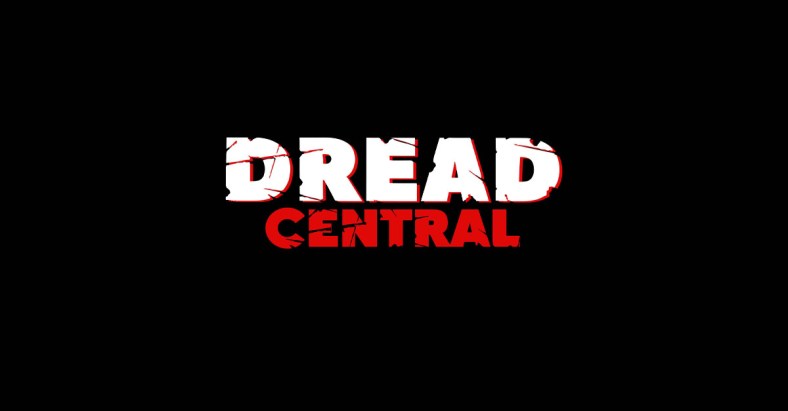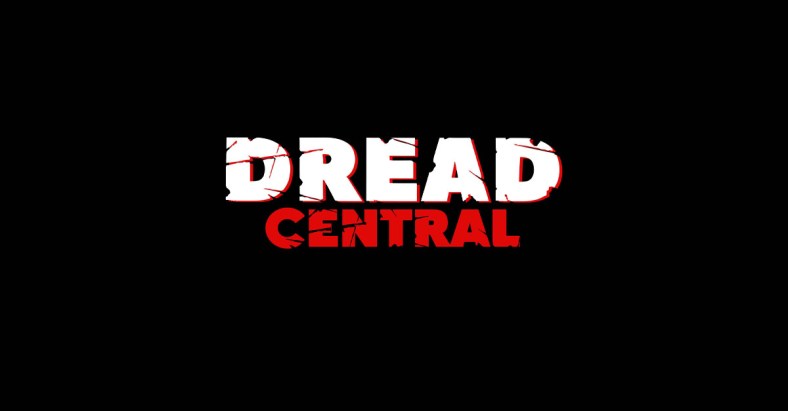Exclusive: Alec Gillis and Tom Woodruff, Jr., Talk Bringing The Monster to Life

The performances in Bryan Bertino’s The Monster by Zoe Kazan (Ruby Sparks, In the Valley of Elah) and Ella Ballentine (The Captive, Anne of Green Gables) are both exceptional, but as horror fans we care most about the performance of the monster itself. Because of the exceptional work by creature FX designers Alec Gillis and Tom Woodruff, Jr., the titular character is the most indelible aspect of the film.
Gillis and Woodruff were kind enough to speak to us about their long, storied careers that have spanned decades.
Some of your favorite genre films like The Terminator, Aliens, The Monster Squad, and Tremors would not be the same if not for the contributions of these two artist and their teams. You see their work everywhere, even in the CGI swamp of Zack Snyder’s Batman v Superman, and The Monster (review) would not be as gut-wrenching without their contribution.

Alec Gillis (left) and Tom Woodruff, Jr. (right)
DC: The Monster is really a family drama that just happens to turn into a creature feature. Is that approach something that attracted you both because the monster is used to enhance the story?
AG: Yeah, what’s cool about it is unlike a lot of projects we work on, this is about the characters. It’s about the mother and daughter and their dysfunctional relationship. It isn’t really about the effects, and we really loved the script; we loved The Strangers that Bryan had directed so it’s a great fit for us.
DC: I thought the documentary Creature Designers: The Frankenstein Complex you both appeared in did a great job of showing the transition from practical to visual effects and how you all have been affected by that. After Star Wars came out, John Dykstra thought movies would only get better as effects improved. Why was he so wrong?
TW: Can you put that up on a banner on your site? That’s great! I don’t want to not serve the purpose of talking about the movie because the answer is kind of within that approach. But the short answer is I think in the quest to continually look for the golden fleece of visual perfection, what got lost or cast aside was an emotional center of realism. I think we’ve got so much polish on the look of things today that we’ve kind of lost the reality of it. And that’s what, again, in coming up with the monster was that it was a practical effects approach and it wasn’t about trying to wow the audience with how the monster was put on film; but more importantly, it was to capture the emotion that it brought to the scene that it was involved in.
DC: Did the concept design for the creature all come from in-house, or did you draw on any outside inspiration from past films in order to flesh everything out?
AG: Bryan had some artwork… it was a nice piece of artwork. What’s cool was that the creature [was] just basically a shadow. It was jet black except for reflective eyes, and we kind of emphasized the teeth. So it was a nondescript enough design that we were able to roll it out. But Bryan was very specific about things like the silhouette, the shape of the forehead and the angle of flames on the face, and stuff like that. He had a good sense of what he wanted to see.
DC: Did you guys both control the animatronics on set, and, Tom, are you still willing and able to me the man in the suit at times? Or were the Alien films grueling enough for you?
TW: I could never get my fill, but this one I did step down as a performer when they were shooting… and I think that was also part of the tax break… to have somebody local. This guy was pretty phenomenal. They did fly him down, and he did some tests with us and showed us what he could do. We could put extensions on him and he was able to crawl around on all fours, basically holding his body up by his arms and his legs. So it was pretty clear that this guy was built to do the job.
DC: Just being a horror fan, I’ve known about you guys for a long time. Do you feel like the horror community respects and reveres the legacy of practical effects more than the average movie buff? I know the rock star era for effects artists has passed, but do you guys ever have conversations with fans that know the history of moviemaking and the contributions that you both have made in the genre world?
AC: Yeah, you know, probably around 2011… I don’t know if you’re aware of The Thing, the reboot of The Thing that we did practical effects for?
DC: Sure I am, unfortunately.
AC: It was a great experience for us but much of our work was cut from the film and was replaced with digital work and we put a video up to show what we had done. That’s when we became aware of this huge fanbase of people who loved practical effects. Honestly, around 2011 that was kind of a low point for us. We thought, well, maybe we’re just from a bygone era, you know? Maybe we just start phasing out and looking for other creative things to do.
When all the fans started expressing their dismay over the way practical effects had been downgraded and the way it doesn’t get an opportunity in big studio films, it was a big charge for us. And we do get to talk to them, actually! We’ve done a few conventions and we get to meet people. It’s a huge group of people, and it even goes beyond the hardcore fans, because when you talk to just the average Joe and you hear them say yeah, I liked this movie or that movie until those computer monsters came out, then it was kind of clunky. You hear that all the time. You also hear people say why does Starship Troopers or the first Jurassic Park look better than most of the digital stuff that’s done now? And it’s because there were real things in those movies. We’re very happy that people like Bryan Bertino made the decision to support practical effects and put them in movies, especially horror movies. Horror movies really demand real stuff so that you don’t knock the audience out of seeing the reality of the moment.
DC: Will we see another landmark film like Carpenter’s The Thing or T2 that combines the old techniques with new breakthroughs? Will there ever be another Jurassic Park?
TW: That’s a fair question. I know that we’re meeting with a lot of people these days – a lot of directors, a lot of independent producers – who get it, who love the look of film. Especially in this genre of horror creature films and science fiction. There’s more of that happening. It’s just there’s no way to find a kind of earthshaking event that’s gonna have everyone stampeding to put us back where we were in the Eighties and early Nineties. But there’s awareness of it, which is great. We have a YouTube channel called studioADI that has over sixty million views and over a quarter of a million subscribers. I know those are small numbers compared to the box office that these movies make, but it does show an awareness and an appreciation of having some kind of mix of real and visual effects on set.
AG: And we’re doing everything we can at Studio ADI to move the projects forward, our own internal projects. They’re lower budget small films but we’ve got a range so hopefully we’ll be doing our part with the support of the fans to keep practical effects healthy.
Make sure to do your part and go see The Monster in select theaters or On Demand TODAY, November 11!

Categorized:News

